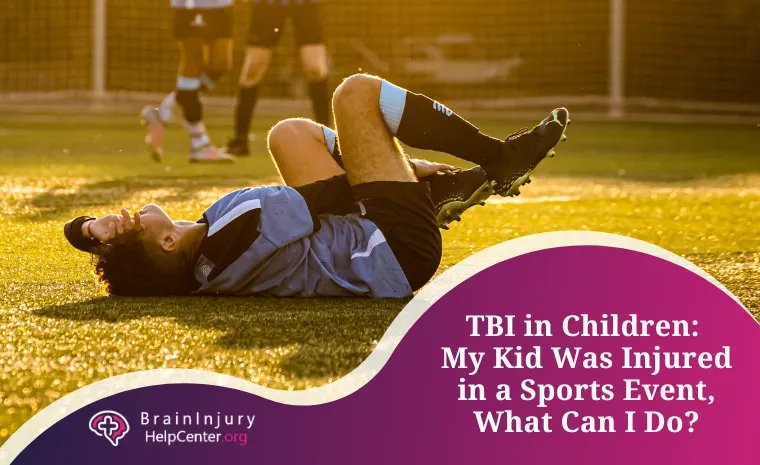Getting involved in sports offers your child the chance to forge lasting friendships and acquire essential life skills. The excitement that comes with participating in these activities is truly wonderful. However, it’s essential to acknowledge that there’s always a potential downside—accidents, including the risk of TBI in children. In today’s article, you can learn everything you need to protect your child and get the compensation they deserve to have a quick and complete recovery.
Understanding Traumatic Brain Injury in Children
TBI is a term encompassing a range of injuries that disrupt normal brain function, often caused by a forceful blow, jolt, or penetration to the head. It’s crucial to recognize that TBIs can manifest in varying degrees of severity, each requiring unique approaches to care and recovery.
Traumatic injuries to nervous system tissue can occur both during the initial impact and as a consequence of subsequent damage. Intracranial injuries can be attributed to either the primary injury or the secondary injury.
The Severity of Injury
Traumatic Brain Injuries (TBIs) in children span a spectrum of severity, ranging from mild concussions to moderate and severe cases. Concussions, categorized as mild TBIs, often occur in sports like football, soccer, and basketball, causing temporary cognitive challenges without always involving loss of consciousness. Moderate cases exhibit more pronounced symptoms, while severe injuries can be life-threatening, potentially resulting in long-term impairments or adverse outcomes for children.
Recognizing TBI Symptoms in Children
Early identification of pediatric head trauma symptoms is vital, including persistent headaches, dizziness, memory lapses, mood swings, altered consciousness, and sensitivity to light or noise. Healthcare professionals use various diagnostic tests to assess the mental status and extent of a suspected TBI in children:
- Neurological Examination: Assessing reflexes, muscle strength, coordination, and sensation.
- CT Scans: Providing detailed cross-sectional images to detect bleeding, fractures, or other abnormalities.
- MRI (Magnetic Resonance Imaging): Creating detailed images of brain structures, useful for identifying subtle or non-structural injuries.
- Glasgow Coma Scale (GCS): A standardized scale assessing consciousness severity.
- Cerebrospinal Fluid Analysis: Identifying infections or bleeding through a spinal tap.
- Electroencephalogram (EEG): Measuring brain electrical activity, aiding in diagnosing abnormal patterns associated with TBI.
Immediate Steps to Take
- Seek Urgent Medical Attention: Upon suspicion of a head injury during a sports event, seek immediate medical attention. Provide essential information to the healthcare professional, aiding proper diagnosis and treatment to avoid long term outcomes.
- Adhere to Medical Advice: Follow prescribed medical advice and intensive care diligently, ranging from rest and medications to surgical procedures, depending on the severity of the TBI.
- Embracing Rehabilitation: Recovery from TBI in children may require rehabilitation therapy, including physical, occupational, and speech therapy after the time of injury.
- Providing Emotional Support: Address emotional and psychological challenges by ensuring your child receives the necessary support. Seek counseling or therapy if needed.

Navigating Legal Aspects and California Laws
In California, organizers of sports events bear the responsibility for participant safety, underscoring a commitment to overall well-being. Understanding the legal side of liability in sports is crucial. If negligence is suspected, consulting a personal injury attorney specializing in sports-related injuries is vital.
Gathering compelling evidence, including medical records, witness statements, photos, videos, communication records, and expert insights, is essential for building a thorough understanding of brain injuries in sports and establishing a robust foundation for pursuing justice.
Preventing TBI in Sports Events
- Ensure the Use of Proper Protective Gear: Ensure your child wears appropriate protective gear, including helmets, to reduce the risk of sports injuries.
- Promote Rule Compliance: Advocate for strict enforcement of safety rules within sports organizations to minimize the risk of head injuries.
Recovery duration varies depending on the severity of the traumatic brain injury (TBI), spanning from weeks to months or even longer in severe cases. If negligence played a role in your child’s TBI during a sports event, consider pursuing a lawsuit. Keep in mind that in California, the statute of limitations for personal injury claims, including TBI, is generally two years. Consult with an attorney promptly to safeguard your child’s well-being and pursue the maximum compensation they deserve.
Conclusion
Dealing with the emotional hurdles of pediatric brain injuries in sports can be formidable. Strengthen your coping mechanisms by gaining knowledge, establishing a robust support system, and taking proactive measures.
Prioritize your child’s well-being and seek guidance from legal professionals, who not only provide legal assistance but also offer valuable insights into severe head injuries in infants. Remember, you’re not alone in this journey, and seeking the appropriate legal support is a crucial step toward healing.









